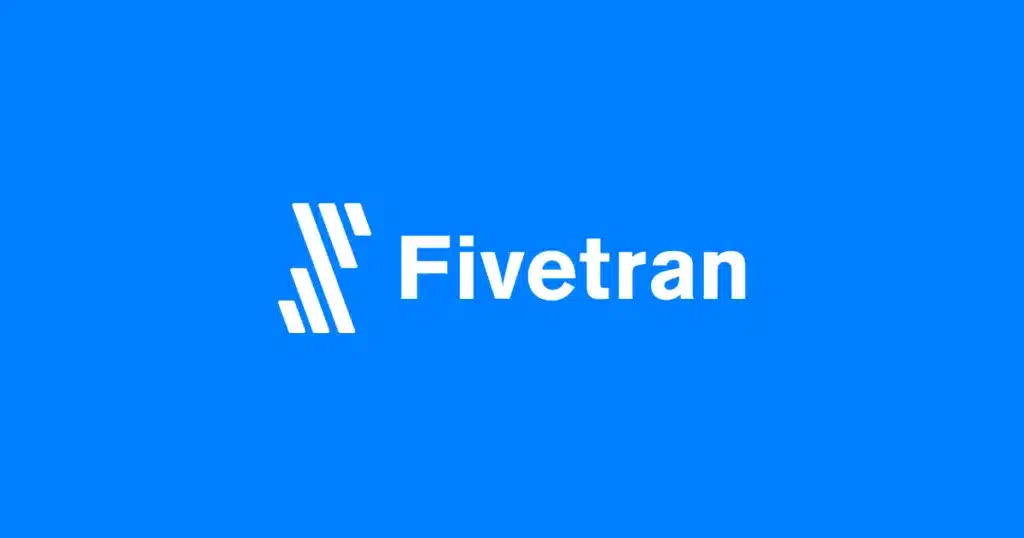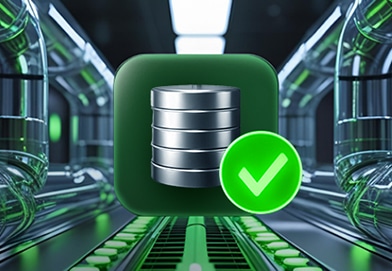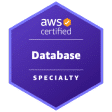A massive amount of data is being generated every day. It’s coming from everywhere – phones, websites, smart devices, and even internal systems. Statista estimates that by 2028, the global total will hit 394 zettabytes. That’s a lot of data to deal with, and companies are feeling the pressure.
Big names like Google, Meta, Amazon, and Apple already use data to shape their products, study behavior, and uncover new ways to make money. Other businesses are catching on. They’re starting to collect and process more data, too, hoping to compete. But managing it all? That’s where things get tough, and when a data pipeline is created in-house or by using a platform, it is crucial.
Getting a data pipeline up and running isn’t always simple. It usually involves coding, configuration, and constant maintenance and monitoring. Many teams don’t have the time or the skills to keep it all going smoothly. That’s where Fivetran helps.
Instead of building pipelines from scratch, teams can use Fivetran to connect their data sources and automatically send everything to the cloud data warehouse. It takes care of the tricky parts so teams can focus on the work that moves the business forward.
This guide walks through how Fivetran works and what it makes easier. If your business is relying on more data than ever, it’s worth seeing how your team can spend less time fixing data and more time using it.
Understanding Data Pipelines
Before we discuss how Fivetran helps businesses simplify their data handling, let’s first discuss data pipelines. Data pipelines are a series of processes and tools used to automate the movement, transformation, and storage of data from one system to another. Many companies create their own data pipelines.
For example, we know that Spotify has developed its own data pipeline to analyze its data and gain a deeper understanding of user preferences. But what does this mean? Simple. It processes activities like skipped tracks, playlists, and listening frequency to refine its music recommendations over time. These insights help personalize the user experience and encourage people to keep engaging with the platform.
Do you see why data pipelines are essential for collecting raw data from various sources, cleaning and transforming it, and delivering it to destinations such as databases, data warehouses, or analytics tools? Your company needs a data pipeline to serve as a channel for data movement, ensuring you can utilize this data for analysis, reporting, and informed decision-making to keep people engaged with your product or service.
Data Pipeline Challenges
In our experience, many organizations encounter challenges and frustrations in building and managing data pipelines due to the complexity and diversity of their data sources. For instance, you may find it challenging to collect and analyze data from your databases, APIs, web data, FTP server, S3 storage, and streaming data from IoT devices within a data pipeline.
Different data sources often produce data in inconsistent formats, with different velocities. This causes problems when trying to format the data for use and analysis. In addition, because of the lack of automated solutions, data teams – like yours – often resort to manual coding and traditional ETL (extract, transform, load) processes.
Unfortunately, these are significantly less efficient than automated solutions, and these processes often hinder workflows and data accessibility, reducing operational efficiency. But what does this mean? It means your teams will struggle to obtain the data they need when they need it, and your resources, such as personnel, time, and tools, will incur higher costs and experience wasted effort.
Put like this, it’s easy to see why efficient data pipelines or tools that have their own data pipeline that you can use are vital. Luckily, there is a light at the end of the tunnel, and it appears in the form of Fivetran. Fivetran addresses these challenges by offering an innovative platform for those who don’t have their own data pipeline.
The platform’s data pipeline effortlessly centralizes data from on-premises data sources, databases, and cloud data platforms. Its automated data connectors and high-performance cloud destinations simplify data integration. This, in turn, reduces the time and effort that would otherwise be spent on manual ETL. Fivetran’s real-time data synchronization also handily ensures up-to-date insights, and its transformation options enable data engineers to transform data for analytics more efficiently.
Introducing Fivetran – How it Simplifies Data Pipelines
As previously mentioned, Fivetran’s extensive range of features helps data teams address various challenges associated with data pipelines.
However, it’s also worth noting that this platform is the global leader in modern data integration. It enables data teams to effortlessly centralize, transform, and synchronize data from various sources to high-performance centralized data stores like data warehouses or data lakes.

Let’s have a look at a few other features that can benefit your business’s data flows:
1. Automated Fivetran Connector
Fivetran features Automated Data Connectors, which eliminate the need for manual coding and ETL processes. Remember why this is a problem? This feature allows data teams to seamlessly connect and integrate data from diverse sources. These connectors are pre-built and optimized for popular databases, data cloud platforms, and analytics tools, thus ensuring compatibility and ease of use.
2. Real-Time Data Sync
With Fivetran’s real-time data synchronization, your business can access up-to-date information. This will allow for better analytics and more informed, data-driven decision-making. And you know what that leads to, right? A better understanding of data and user preferences equals more profits and longevity in the industry you operate within.

Additionally, the platform efficiently handles schema changes and incremental data updates. This eliminates the need for manual intervention. By bypassing manual intervention, you ensure data consistency and accuracy across all systems within an organization.
3. Data Transformation and Preparation Tools
Fivetran’s data transformation and preparation tools empower data engineers to shape and prepare data according to specific requirements unique to each business or organization. Tasks your business performs regularly, such as data type conversion, filtering, and data enrichment, can be performed effortlessly, allowing for more time—and resource-efficient analytics and reporting.

4. Intuitive Data Pipeline Management Interface
Fivetran features an intuitive user interface that guides you through a step-by-step process, enabling you to connect to your desired data sources and destinations with just a few clicks. It also provides a visual representation of the data pipeline, making it easier to understand and monitor how data flows from one system to another.
5. Prevent Schema drift
It’s not uncommon for many data sources (SAAS services) to modify their database schemas. Fivetran can automatically detect these changes and apply them to the destination. Before, data engineers had to talk to one another to synchronize the database schema change. Not anymore. It’s automatic. Fivetran connectors are schema or data structure-aware.
6. Pipeline Monitoring
Monitoring the data pipeline is critical. Many reports, thus people, rely on fresh data. Delays or interruptions in the data pipeline can have significant effects at the destination, especially if that data is used by many people in the organization.
How to Set Up a Fivetran Pipeline
While Fivetran does a fantastic job of automating much of the data pipeline setup, we must admit that it’s not an entirely plug-and-play solution that works straight out of the box for everyone. Instead, it does require setup and user input. Here’s a breakdown of what the Fivetran setup process typically involves:
1. Identify Data Sources
Setting up a Fivetran data pipeline begins with identifying and selecting the data connector for the data source from which the data will be collected. This could include internal data sources, like previously formed databases, stored files, and applications (which might first require an audit). It could also include external data sources, such as APIs and social media platforms. FTP servers, ERP, and complicated systems. Fivetran supports more than 500 connectors.
Having your internal data audited prior to collection, transformation, and aggregation could significantly speed up the entire process of building a data pipeline.
2. Determine your destination
Once you’ve selected your data sources, you’ll need to select the destination. Snowflake is a classic one. FiveTrans-supported storage solutions typically include traditional databases, such as MySQL or Oracle, and data warehouses like Snowflake or Amazon Redshift.
However, what you might like is that the platform also supports data storage through a data lake, such as Azure Data Lake Storage or Amazon S3.
3. Define Data Freshness
The next step is to decide how often you’ll want the data pulled from the source and sent to its destination. The standard subscription allows up to 15 minutes of data synchronization. For most BI Analytics, a daily refresh is sufficient.
4. Define Optional Processing Logic
Next, you must decide whether to leverage Fivetran’s transformation features. With Fivetran, this can include setting up automated transformations using DBT core or leveraging built-in transformation options. Most companies don’t use Fivetran transformation; they rely heavily on DBT to transform the raw data stored in the data warehouse into fact and dimensional tables.
At this stage, tasks such as filtering, aggregating, merging, cleansing, and normalizing can be applied to ensure your data is consistent and ready for use across various systems.
5. Implement Data Analysis
With your data now processed and stored in your chosen platform, you’re ready to dig into the analysis. It is at this step where the real value comes in. At this stage, you can use your data pipeline with FiveTran to begin identifying trends, spotting opportunities, and creating visualizations. These will help your team and stakeholders make informed decisions.
6. Monitoring and Maintenance
After your data pipeline is up and running, it’s essential to monitor it. Luckily, maintaining a Fivetran pipeline doesn’t require much heavy lifting. Set up alerts so you’ll know if something breaks, schedule occasional audits to check performance, and make updates as your data needs shift.
With regular attention, your pipeline will keep doing its job: moving, syncing, and preparing your data so your team can focus on making informed decisions backed by real-time information.
The Benefits of Using Fivetran for Your Data Pipelines
Thanks to its powerful features and capabilities, Fivetran enables data teams to perform analytics and derive actionable insights, thus driving data-based business growth. However, those aren’t the only benefits Fivetran offers. Below is a more comprehensive list:
1. Integration of Diverse Data Sources
Fivetran works with over 500 sources — from major cloud platforms to popular databases and analytics tools. This wide coverage makes it easier for teams to connect everything in one place. With properly cleansed and connected data, businesses can see both the big picture and the fine details — whether it’s past trends or live updates — to guide more innovative strategies.
2. Operational Efficiency and Reliable Insight
With Fivetran handling the heavy lifting behind the scenes, data teams have more time to focus on reporting, analysis, and planning instead of fixing pipeline errors or manually syncing systems.
This not only cuts costs associated with ETL processes but also provides businesses with actionable and, most importantly, reliable insights based on previously cleansed factual data.
3. Simplifying Data Pipeline Setup
Thanks to its user-friendly and intuitive interface, setting up Fivetran with a modern data stack is significantly easier compared to traditional data integration approaches. Furthermore, Fivetran’s self-service capabilities enable even those with no technical expertise to set up and manage their data pipelines with very little effort.

4. Improved Data Quality
Fivetran includes built-in error handling and data validation, which helps catch issues like mismatched values or missing fields during the pipeline process. These features reduce the chances of letting bad or incomplete data slip through. It also handles schema changes automatically, so if a source updates, the pipeline can adjust without manual rework.

That flexibility makes it easier to keep your data consistent and your integrations stable. And if something unexpected happens, Fivetran’s alert system flags it so your team can quickly fix it to rectify or alleviate any issues in the data pipeline.
5. Scalability
Fivetran is designed to be scalable with your business and to accommodate all the changes your business or organization may undergo as it grows. This may include incorporating additional databases, cloud data platforms, and more; Fivetran is built to simplify the process and allow you to adapt your data pipelines to match evolving needs.
Simplify with Data Sleek, Fivetran, and Snowflake
The ability to move data rapidly and efficiently between systems has become a fundamental business requirement. Since your data is one of your most powerful assets, you should strive to stay ahead of the curve and consider deprecating classic data pipelines in favor of cloud-based solutions.
This move is made more accessible with Data Sleek, an official Fivetran partner. With Data Sleek, you get a team of data engineers and scientists with experience in Fivetran, dbt, and Snowflake computing. So, if you’re considering integrating a data integration solution with Fivetran, don’t hesitate to book a free consultation with one of our data experts.







